Beer Styles

INTERNATIONAL PALE LAGER
Flavor & balance: Lightly flavored with low hop bitterness and water cracker or white bread malt flavor. Typically highly carbonated with a crisp, light body. History: Similar to American Lagers,
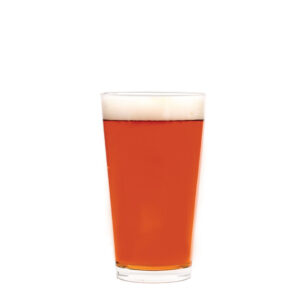
CALIFORNIA COMMON
Flavor & balance: Malty amber beer made with lager yeast fermented at warmer temperatures. Woody or minty hop flavor with firm bitterness for clean finish. History: This most flavorful of

AMERICAN BARLEYWINE
Flavor & balance: American Barleywines typically show high levels of American hop aroma, flavor, and bitterness as well as rich caramel and toffee malt flavors in a robust, high-alcohol ale.

IMPERIAL STOUT
Flavor & balance: Intense roasted flavors of coffee and chocolate with medium to high hop bitterness. Dark and dried fruit notes are common. The additional alcohol may impart a warming
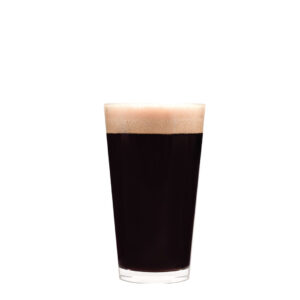
AMERICAN STOUT
Flavor & balance: The roasty, coffee flavors of stout form the malt base of this beer, supported by moderate citrus and resinous American hops in flavor, aroma, and bitterness. History:

AMERICAN PORTER
Flavor & balance: Displays dark malt flavors like chocolate and roast without intense acrid or burnt flavors of stout. Hopping varies widely. History: Porter history extends back to the early

AMERICAN BROWN ALE
Flavor & balance: A malt-dominated style with rich toasty, caramel, and chocolate flavors complemented by low to medium levels of American hops and medium bitterness. History: A classic beer of

DOUBLE IPA
Flavor & balance: This style is characterized by an extreme expression of American hops in aroma, flavor, and bitterness. Maltiness may be subdued by the use of sugar to lighten

HAZY IPA
Flavor & balance: Intense American hop aroma and ripe, tropical fruit or fruit juice-like flavors dominate this style. Bitterness is pronounced but subdued compared to other types of IPA. History:

AMERICAN IPA
Flavor & balance: This style is defined by the assertive presence of American hops in aroma, flavor, and bitterness. Resinous, citrus hop traits dominate aroma and flavor. History: The original

AMERICAN AMBER ALE
Flavor & balance: Amber ales have the evident citrus and pine hoppiness of American Pale Ale with a richer malt base that includes dark caramel and toasted flavors. Both malt

AMERICAN PALE ALE
Flavor & balance: Citrus and pine flavors of American hop varieties are evident—and usually dominant—in aroma and flavor. Low to medium malt base with some caramel and toast notes. History:

AMERICAN BLONDE ALE
Flavor & balance: Bread and light biscuit notes from pale malts. Variable level of hop flavor and gentle bitterness. History: Lightly flavored all-malt beer. Related Styles: American Wheat Beer COLOR

AMERICAN WHEAT BEER
Flavor & balance: Light malt flavor includes flour and bread notes from wheat. Hop character varies from low to moderate. Does not have the clove-banana fermentation traits of German wheat

AMERICAN LIGHT LAGER
Flavor & balance: Light flavor, thin body, and high carbonation combine to create a highly refreshing beer. History: First brewed in the mid-1900s, American Light Lagers achieved widespread popularity through

KÖLSCH
Flavor & balance: Often described as the ale version of a Pilsner, with subtle fruitiness, delicate malt flavor, and moderate bitterness. High attenuation gives the beer a crisp, refreshing edge.

GOSE
Flavor & balance: Highly carbonated German wheat beer brewed with salt and coriander and fermented with lactic acid bacteria. Beer should be tart and refreshing and should not taste overly
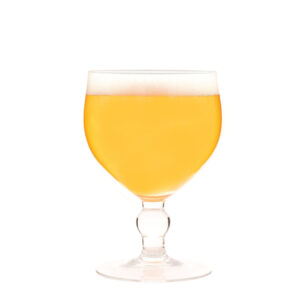
BERLINER WEISSE
Flavor & balance: Low-alcohol German wheat beer with assertive lactic acidity and no hop flavor, aroma, or bitterness. High carbonation and tartness contribute to highly refreshing character. History: Historically brewed

WEISSBIER
Flavor & balance: Flour-like maltiness of wheat balanced by clove and banana fermentation flavors and high levels of carbonation. History: Weissbier has fluctuated in popularity over several centuries but today

DOPPELBOCK
Flavor & balance: Highly malty and often sweet and thick. The malt character follows beer color with pale examples being bready and toasty while darker examples show toffee and chocolate

HELLES BOCK
Flavor & balance: Has the bready, toasty flavors of a pale Doppelbock, but with less alcoholic strength and more hop flavor, aroma, and bitterness. History: A pale version of bock

MÄRZEN
Flavor & balance: A malt-balanced beer with about 0.5 to 1.0% more alcohol than German Pils or Munich Helles. Most examples show malt flavors of bread, toast, and bread crusts.

CZECH PREMIUM PALE LAGER
Flavor & balance: Generally darker and more malty than German Pils, but with similar levels of aroma, flavor, and bittering hops. History: Golden lager from Czech Republic city of Pilsen,

MUNICH HELLES
Flavor & balance: Similar in alcohol and appearance to German Pils but malt balanced so that it shows off the bready flavor of pilsner malt. History: Formulated in 1890s to

GERMAN PILS
Flavor & balance: Floral, perfumy hops dominate aroma and flavor, crisp finish from bitterness. Often has some bread-like pale malt flavor. History: German interpretation of the original pilsner from Bohemia
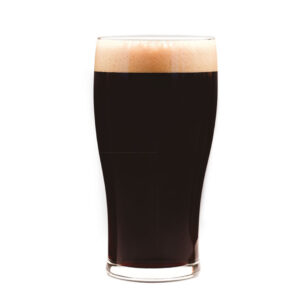
IRISH STOUT
Flavor & balance: Irish Stout has the lowest alcohol content of the many stout variations. Defined by burnt, acrid, coffee-like flavor from roasted barley. Significant bitterness but little to no
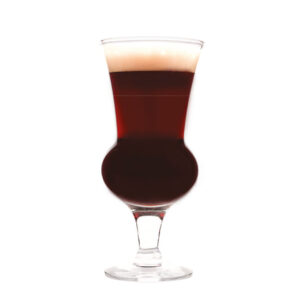
WEE HEAVY
Flavor & balance: Rich caramel malt flavors supported by light roasted, nutty, or toasted notes. Hop flavor and bitterness are low and balance is firmly towards malt. History: Similar in

OATMEAL STOUT
Flavor & balance: Oatmeal stout displays a balance somewhere between an Irish Stout and a Sweet Stout, but often tends towards sweetness with a full, creamy mouthfeel. History: A variation

SWEET STOUT
Flavor & balance: Sweet Stout displays lower bitterness than most stouts to emphasize malt flavor and sweetness. A sub-style of Sweet Stout called Milk Stout is further sweetened by adding

BRITISH BROWN ALE
Flavor & balance: Nutty, caramel malt flavors provide the key attraction. Moderate levels of bitterness and possible English hop aroma and flavor. History: A moderate strength dark ale, lacking the
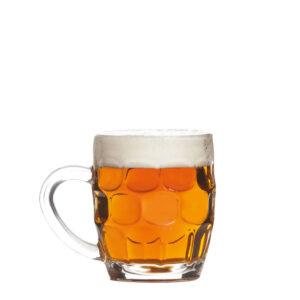
BEST BITTER
Flavor & balance: A “session” beer, flavorful but brewed for drinkability. Balanced toward bitterness but with apparent malt character. Herbal, earthy hoppiness. History: A member of the British Bitters family,

WITBIER
Flavor & balance: Spicy wheat ale with refreshing flavors derived both from fermentation and the addition of spices such as coriander and orange peel. Notable for using unmalted wheat for
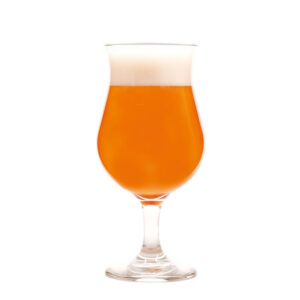
SAISON
Flavor & balance: Fruity esters and peppery phenolic notes from fermentation occasionally fortified by an eclectic mix of herbs and spices. Further complexity from low to medium hop aroma and
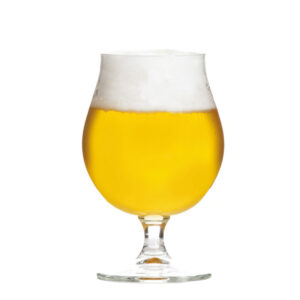
BELGIAN GOLDEN STRONG ALE
Flavor & balance: These light- to medium-bodied beers often hide their substantial alcohol content very well. They are very pale (straw to gold in color) with moderate bitterness, light body,

BELGIAN BLOND ALE
Flavor & balance: Gold in color and malt-balanced. Malt along with fruity esters gives an impression of sweetness. History: Developed to compete with Pilsner-style beers. Often shows slightly less fermentation

BELGIAN TRIPEL
Flavor & balance: Characterized by fruity esters and spicy/peppery phenols produced during fermentation. Medium bodied with a slight sweetness and pale malt flavor, Belgian Tripels may also have substantial hop

BELGIAN DUBBEL
Flavor & balance: Some examples are malt-balanced and on the sweet side, while others remain malt-balanced but lack sweetness. Many examples display dark fruit and/or spicy yeast character. History: Produced

FLANDERS RED ALE
Flavor & balance: This style develops a measure of vinegary sourness and fruit notes during maturation in large oak tanks, but the best examples retain enough malt flavor and sweetness

FRUIT LAMBIC
Flavor & balance: Fermented by several yeast and bacteria, aged for up to three years, and often a blend of batches and vintages, this complex ale exhibits fruit flavor as
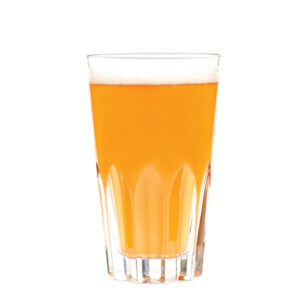
GUEUZE
Flavor & balance: A long multi-organism fermentation gives thismember of the lambic family lactic, barnyard-like, and earthy flavors.Gueuzes are refermented in the bottle to yield high carbonation, whichresults in a

